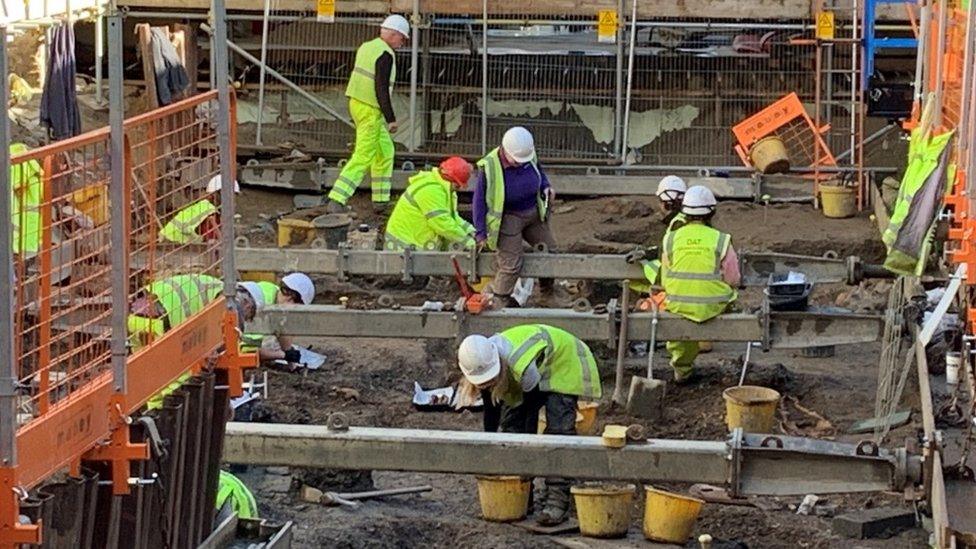Anglesey: Iron Age coins found declared treasure
- Published
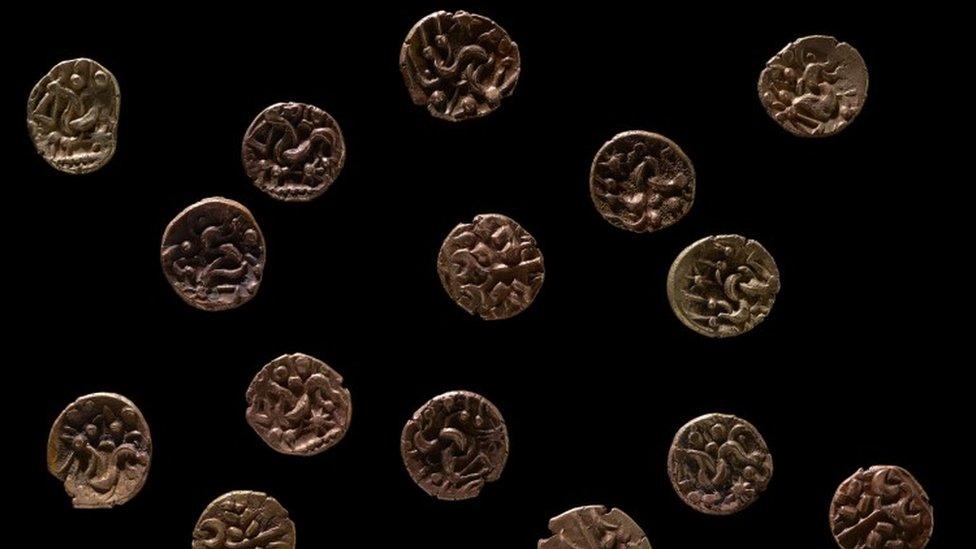
Fifteen coins scattered in an Anglesey field were found by metal detectorists
A hoard of Iron Age gold coins have been discovered for the first time in Wales.
The fifteen coins, known as staters, were officially declared treasure this week by the senior coroner for north Wales.
They were uncovered in Llangoed, Anglesey between July 2021 and March 2022 by metal detectorists.
Lloyd Roberts, who found the first two coins, said the find was "number one on my wishlist".
He added: "Having never expected to actually find one, let alone in Anglesey, can you imagine my shock, delight and surprise, having dug up a beautiful full gold stater in mint condition?"
Mr Roberts, along with friend Peter Cockton, discovered five coins in total and the remaining 10 were found by Tim Watson - all scattered across the corner of a field.
They reported the finds to the Portable Antiquities Scheme.
"We just sat on the spot, had a coffee and imagined what our surroundings and people's lives were like over 2,000 years ago," said Mr Roberts.
Mr Watson added: "I'm relatively new to metal detecting and was encouraged to give it a go by my dad during lockdown.
"I'd been over this field a few times and not found much of interest and then one evening literally struck gold."
Gwynedd Archaeological Trust visited the site in September 2021, seeking clues as to why the coins were buried.
Sean Derby, an historic environment record archaeologist, said: "This hoard is a fantastic example of the rich archaeological landscape that exists in north-west Wales.
"While the immediate vicinity of the find did not yield any clues as to the find's origin, the findspot lies in an area of known prehistoric and early Roman activity and helps increase our understanding of this region."
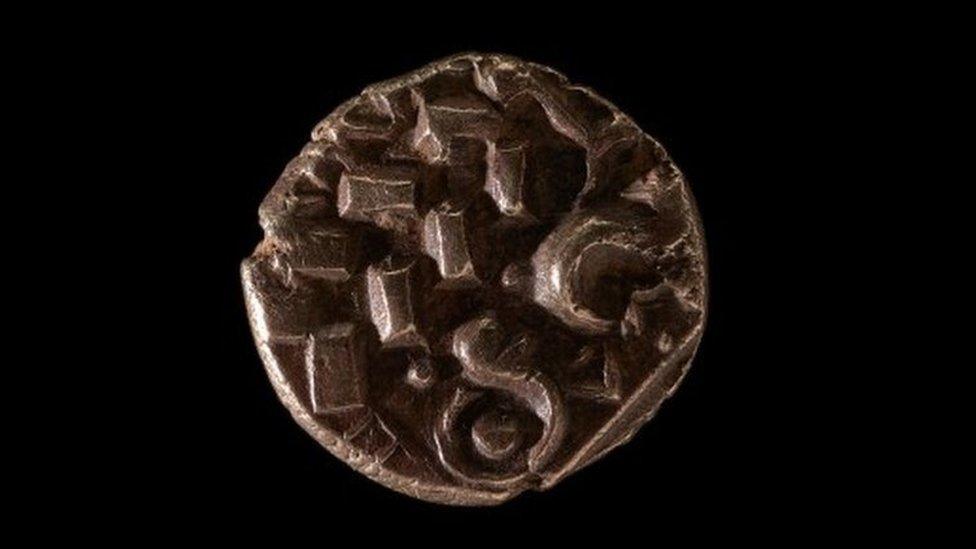
The coins were struck between 60 BC and 20 BC and are attributed to the Corieltavi tribe
The coins were struck between 60 BC and 20 BC at three different mints across what is now Lincolnshire.
They are attributed to the Corieltavi tribe, who inhabited the geographical area of the modern east Midlands during the late Iron Age.
The Iron Age tribes inhabiting modern Wales did not make their own coins and rarely used other tribes' coins, so finds from this period are rare.
Ian Jones, building collections manager at Oriel Môn museum on Anglesey, said the discovery was "thrilling news".
"The coins are of national importance and we are excited about acquiring them for Anglesey's museum collection and to put them on public display," he said.

CELEBRATING WELSH MUSIC: From the swinging sixties to Cool Cymru
LADY BIGFOOT: A lonely Bigfoot has fallen in love...

Related topics
- Published21 March 2023
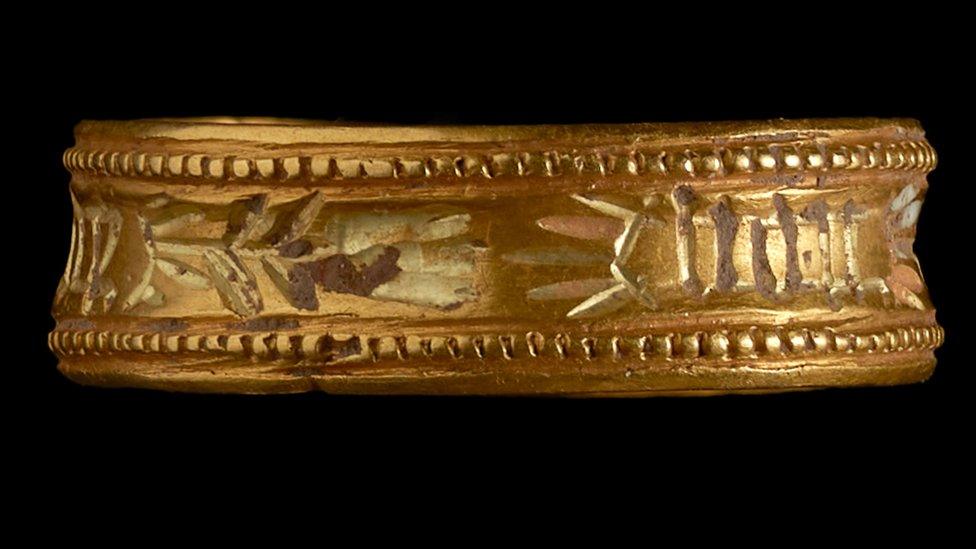
- Published30 September 2021
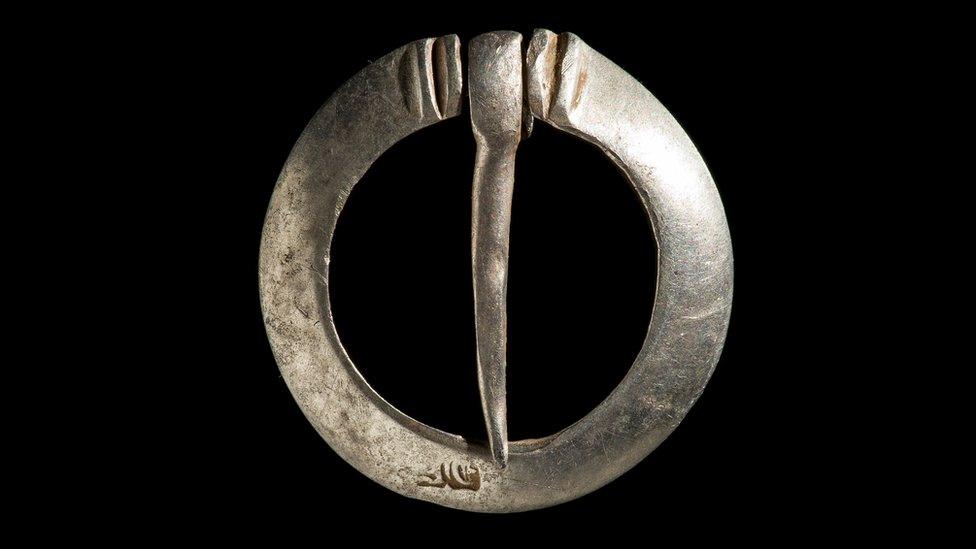
- Published11 October 2022
